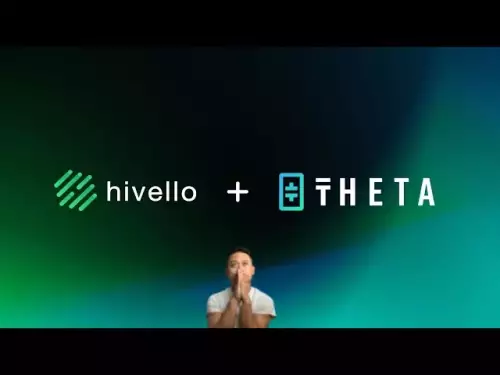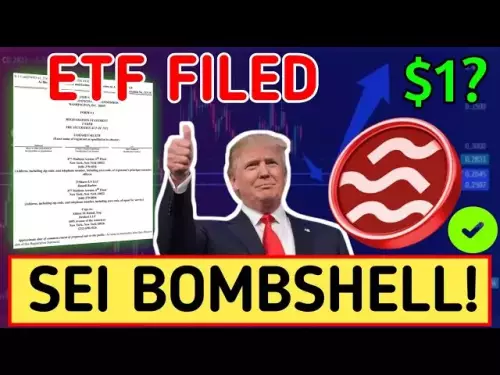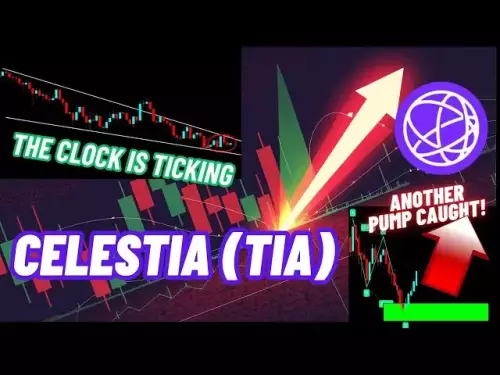-
 Bitcoin
Bitcoin $108300
-2.56% -
 Ethereum
Ethereum $4395
-1.64% -
 XRP
XRP $2.833
-2.65% -
 Tether USDt
Tether USDt $1.000
-0.01% -
 BNB
BNB $859.3
-1.19% -
 Solana
Solana $206.5
-4.32% -
 USDC
USDC $0.9999
0.00% -
 Dogecoin
Dogecoin $0.2172
-1.48% -
 TRON
TRON $0.3397
-1.23% -
 Cardano
Cardano $0.8361
-1.03% -
 Chainlink
Chainlink $23.37
-3.16% -
 Hyperliquid
Hyperliquid $44.50
-2.30% -
 Ethena USDe
Ethena USDe $1.001
-0.03% -
 Sui
Sui $3.318
-3.27% -
 Stellar
Stellar $0.3616
-2.99% -
 Bitcoin Cash
Bitcoin Cash $532.7
-4.23% -
 Cronos
Cronos $0.2999
-1.70% -
 Avalanche
Avalanche $23.71
-4.83% -
 Hedera
Hedera $0.2280
-2.65% -
 UNUS SED LEO
UNUS SED LEO $9.501
-0.86% -
 Litecoin
Litecoin $110.8
-1.83% -
 Toncoin
Toncoin $3.091
-1.26% -
 Shiba Inu
Shiba Inu $0.00001240
-1.06% -
 Polkadot
Polkadot $3.814
-2.77% -
 Uniswap
Uniswap $9.712
-2.23% -
 Dai
Dai $0.9999
0.00% -
 Bitget Token
Bitget Token $4.546
-1.23% -
 Aave
Aave $317.7
0.91% -
 Monero
Monero $261.9
-0.95% -
 Ethena
Ethena $0.6649
-0.51%
How to revoke token approvals in Trust Wallet?
Regularly revoke unused token approvals in Trust Wallet via tools like Revoke.cash to enhance security and reduce risk of unauthorized access. (154 characters)
Aug 30, 2025 at 04:49 am
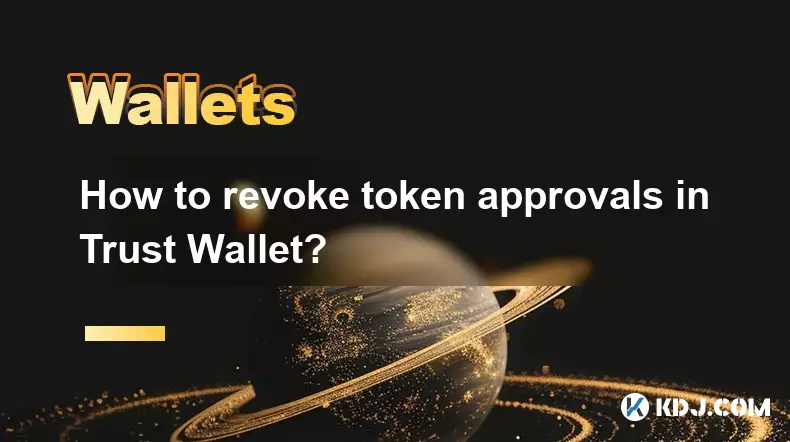
Understanding Token Approvals in Trust Wallet
1. Token approvals in Trust Wallet allow smart contracts or decentralized applications (dApps) to access specific amounts of your tokens. When you interact with a DeFi platform or NFT marketplace, you often grant permission for the platform to spend your tokens on your behalf. This approval is recorded on the blockchain and remains active until manually revoked.
2. Leaving unnecessary approvals active poses a security risk. If a dApp you've approved gets compromised, malicious actors could potentially drain your approved tokens. Revoking unused approvals minimizes exposure and enhances wallet security.
3. Trust Wallet itself does not offer a direct interface to revoke approvals. Instead, users must interact with the Ethereum or compatible blockchain network directly using tools that support contract interaction. This process requires connecting your Trust Wallet to a third-party revocation service.
4. The approval mechanism operates through the ERC-20 standard on Ethereum and similar implementations on BNB Chain and other EVM-compatible networks. Each approval is a transaction that sets an allowance for a specific contract address to transfer tokens from your wallet address.
5. Users should regularly audit their active approvals, especially after using new dApps or participating in token swaps. Monitoring these permissions helps maintain control over digital assets and prevents unauthorized access.
Steps to Revoke Approvals Using Third-Party Tools
1. Open Trust Wallet and navigate to the browser feature. Use it to visit a trusted token approval revocation platform such as Revoke.cash or Blockaid.io. These tools are designed to help users manage and cancel token allowances securely.
2. Connect your Trust Wallet to the revocation website by selecting the wallet connect option or injecting your wallet through the in-app browser. Ensure the website URL is correct and the connection is secure before proceeding.
3. Once connected, the tool will scan your wallet’s transaction history and display a list of active token approvals. Each entry shows the token name, the contract address with spending rights, and the approved amount.
4. Review the list carefully. Identify approvals for dApps you no longer use or don’t recognize. Select the approvals you wish to revoke. The tool will prepare a blockchain transaction to reset the allowance to zero.
5. Confirm the revoke transaction in Trust Wallet. A small gas fee will be charged in the native network token (e.g., ETH, BNB). After confirmation, the smart contract will no longer have permission to access the specified tokens.
Best Practices for Managing Token Permissions
1. Always revoke approvals after completing a transaction on a DeFi platform or NFT marketplace. Treat approvals like temporary access passes that should be canceled once their purpose is fulfilled.
2. Use revocation tools periodically to audit your wallet. Regular audits reduce the attack surface and protect your holdings from dormant threats. Automated scanners can detect high-risk contracts linked to known exploits.
3. Avoid granting unlimited allowances. When possible, approve only the exact amount needed for a transaction. Some dApps allow manual input of allowance values, giving you greater control over exposure.
4. Be cautious when connecting your wallet to unfamiliar dApps. Phishing sites can mimic legitimate platforms and trick users into granting approvals. Double-check URLs and verify contract addresses before confirming any transaction.
5. Never share your seed phrase or private key with any service, including revocation tools. These platforms interact with your wallet without requiring sensitive credentials. Legitimate tools only request transaction signing, not account access.
Frequently Asked Questions
Can I revoke approvals without paying gas fees?
No, revoking token approvals requires a blockchain transaction, which incurs a gas fee. The fee is paid to miners or validators for processing the transaction that resets the allowance. Some platforms offer batch revocation to minimize the number of transactions and reduce overall costs.
Does revoking an approval affect my token balance?
No, revoking an approval does not alter your token balance. It only removes the spending permission granted to a specific contract. Your tokens remain in your wallet, and you retain full control over them.
Can I undo a revoked approval?
Yes, if you need to interact with a dApp again after revoking its approval, you can re-approve the token when prompted. The dApp will initiate a new approval request, which you must sign to restore spending permissions.
Are token approvals only relevant on Ethereum?
No, token approvals exist on all EVM-compatible blockchains such as BNB Chain, Polygon, and Avalanche. The process for revoking them is similar across networks, though you may need to use network-specific tools or switch networks within the revocation platform.
Disclaimer:info@kdj.com
The information provided is not trading advice. kdj.com does not assume any responsibility for any investments made based on the information provided in this article. Cryptocurrencies are highly volatile and it is highly recommended that you invest with caution after thorough research!
If you believe that the content used on this website infringes your copyright, please contact us immediately (info@kdj.com) and we will delete it promptly.
- Bitcoin vs. Altcoins: Decoding the Dominance Shift
- 2025-08-30 13:25:27
- Luxury Brands, Crypto Adoption, and the Web3 Revolution: What's the Deal?
- 2025-08-30 13:05:14
- BlockDAG, ETH, and PEPE Coin: Decoding the Crypto Hype in the City That Never Sleeps
- 2025-08-30 11:50:12
- Paige Bueckers, Micah Parsons, and Luka Doncic: A whirlwind of trades, stardom, and cross-sport admiration
- 2025-08-30 09:25:36
- Bitcoin, Settlement, and Accounting Standards: A New Era of Transparency?
- 2025-08-30 10:10:12
- Bitcoin Price, Eric Trump, and AMDax: A Million-Dollar Prediction and a 1% Supply Grab
- 2025-08-30 10:45:57
Related knowledge

How to use Trust Wallet's built-in DEX?
Aug 29,2025 at 07:28am
Understanding Trust Wallet’s Built-in DEX1. Trust Wallet integrates a decentralized exchange (DEX) directly within its mobile application, allowing us...
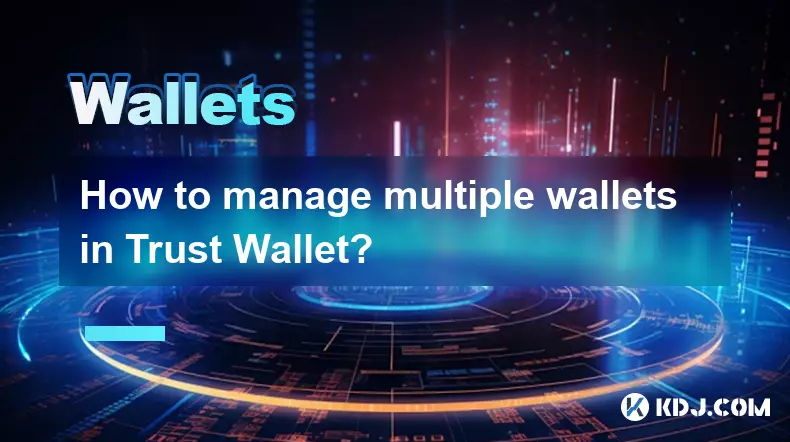
How to manage multiple wallets in Trust Wallet?
Aug 30,2025 at 04:45am
Understanding Wallet Management in Trust Wallet1. Trust Wallet supports a wide range of cryptocurrencies and tokens, allowing users to manage multiple...
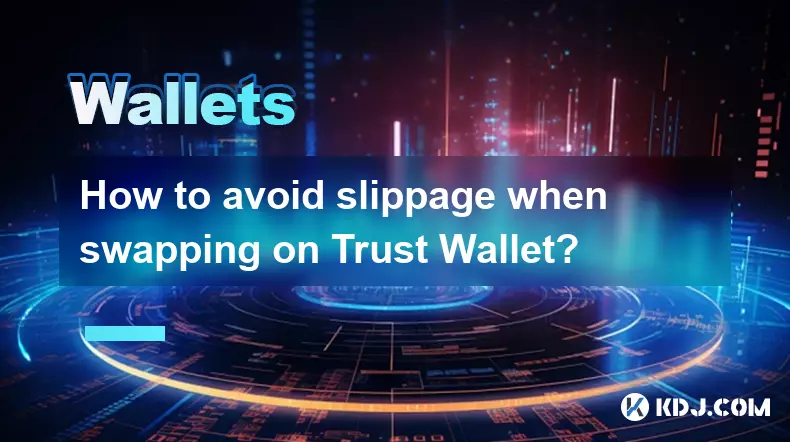
How to avoid slippage when swapping on Trust Wallet?
Aug 29,2025 at 03:01am
Understanding Slippage in Decentralized Exchanges1. Slippage occurs when the price of a cryptocurrency changes between the time a transaction is initi...
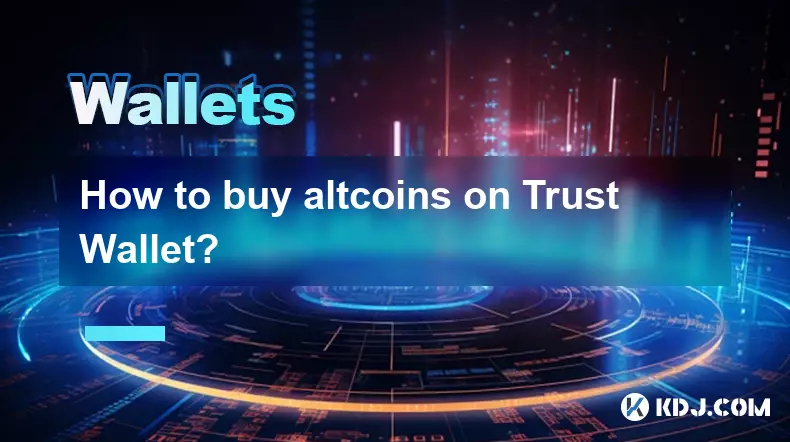
How to buy altcoins on Trust Wallet?
Aug 29,2025 at 11:36pm
Understanding Trust Wallet and Altcoin Purchases1. Trust Wallet is a non-custodial cryptocurrency wallet that supports a wide range of altcoins and bl...
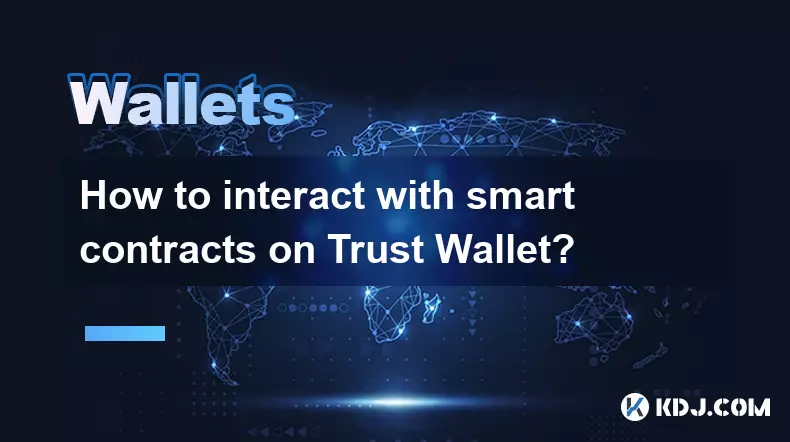
How to interact with smart contracts on Trust Wallet?
Aug 29,2025 at 01:28am
Understanding Smart Contracts and Trust Wallet Compatibility1. Smart contracts are self-executing agreements with the terms directly written into code...

How to troubleshoot syncing issues in Trust Wallet?
Aug 30,2025 at 07:51am
Troubleshooting Syncing Issues in Trust WalletSyncing problems in Trust Wallet can prevent users from viewing their balances, sending or receiving tok...

How to use Trust Wallet's built-in DEX?
Aug 29,2025 at 07:28am
Understanding Trust Wallet’s Built-in DEX1. Trust Wallet integrates a decentralized exchange (DEX) directly within its mobile application, allowing us...

How to manage multiple wallets in Trust Wallet?
Aug 30,2025 at 04:45am
Understanding Wallet Management in Trust Wallet1. Trust Wallet supports a wide range of cryptocurrencies and tokens, allowing users to manage multiple...

How to avoid slippage when swapping on Trust Wallet?
Aug 29,2025 at 03:01am
Understanding Slippage in Decentralized Exchanges1. Slippage occurs when the price of a cryptocurrency changes between the time a transaction is initi...

How to buy altcoins on Trust Wallet?
Aug 29,2025 at 11:36pm
Understanding Trust Wallet and Altcoin Purchases1. Trust Wallet is a non-custodial cryptocurrency wallet that supports a wide range of altcoins and bl...

How to interact with smart contracts on Trust Wallet?
Aug 29,2025 at 01:28am
Understanding Smart Contracts and Trust Wallet Compatibility1. Smart contracts are self-executing agreements with the terms directly written into code...

How to troubleshoot syncing issues in Trust Wallet?
Aug 30,2025 at 07:51am
Troubleshooting Syncing Issues in Trust WalletSyncing problems in Trust Wallet can prevent users from viewing their balances, sending or receiving tok...
See all articles





















